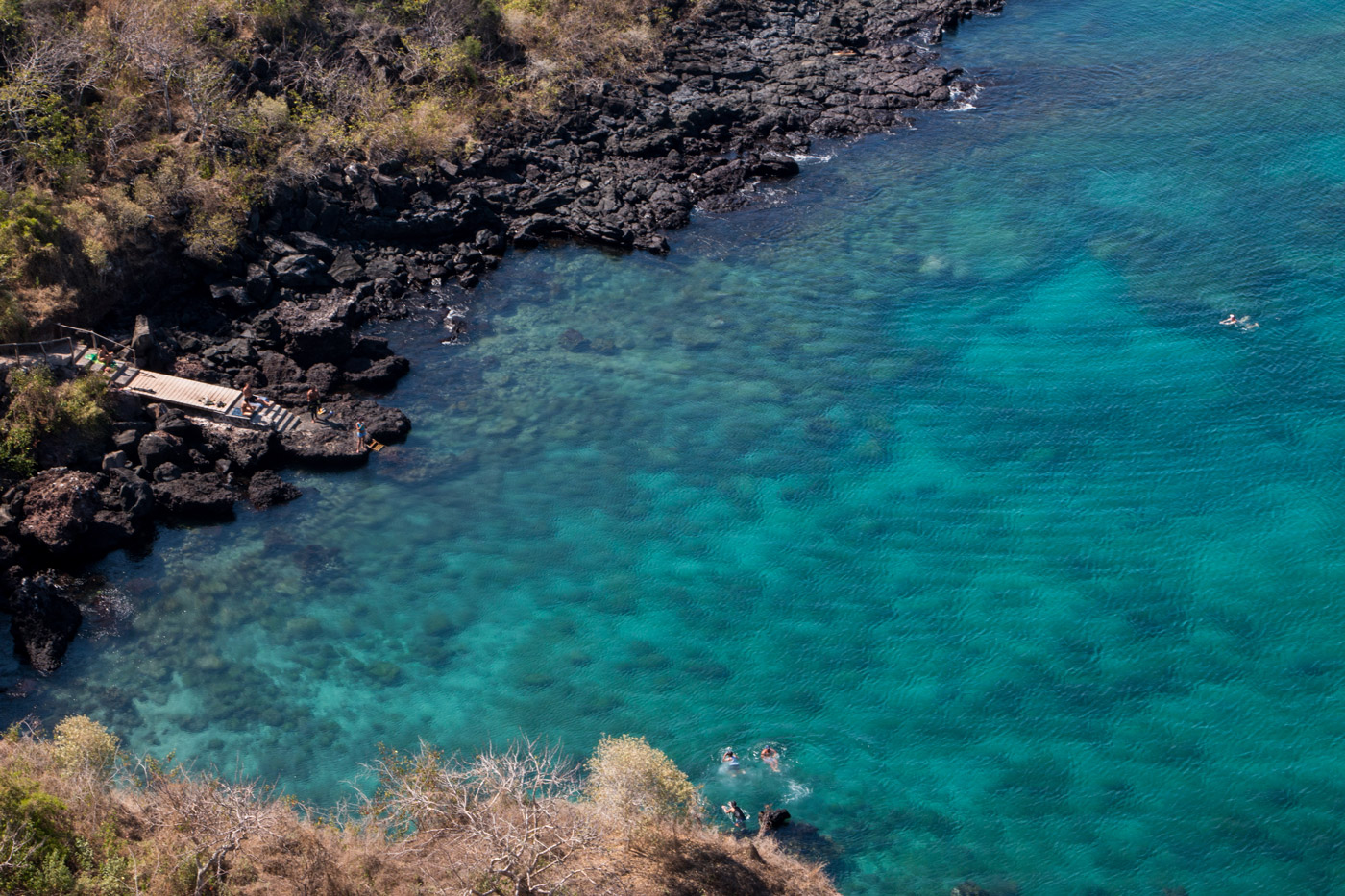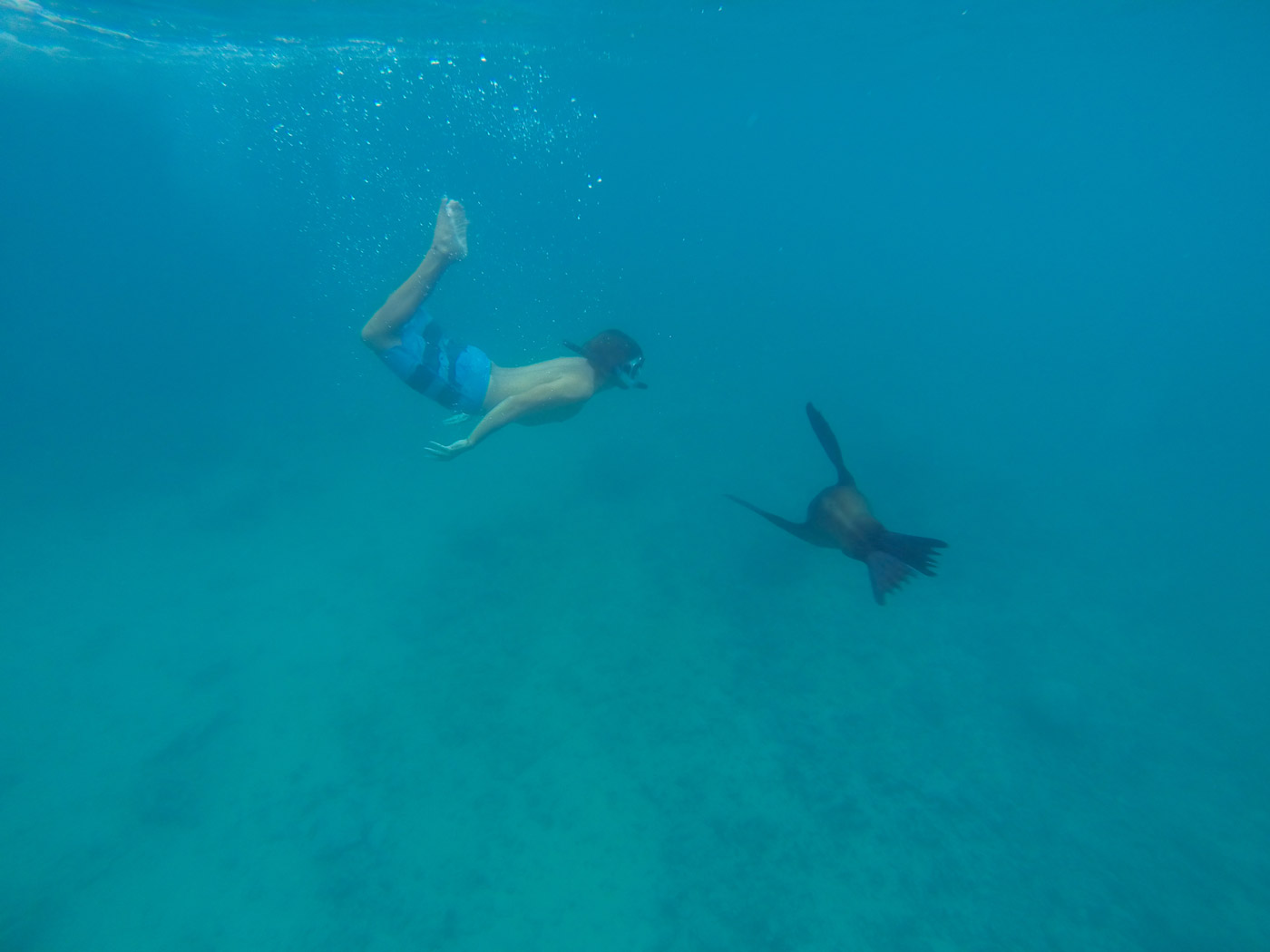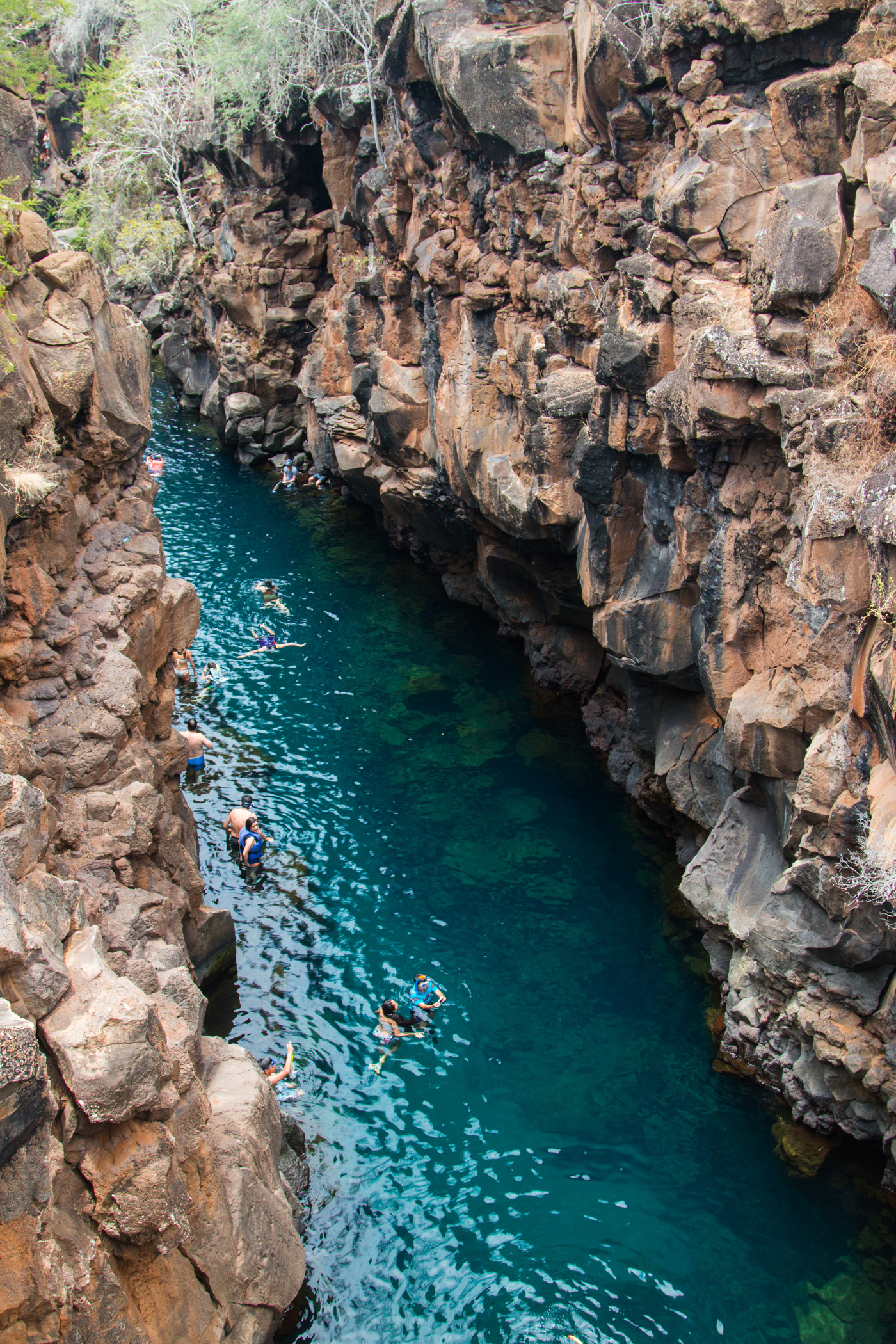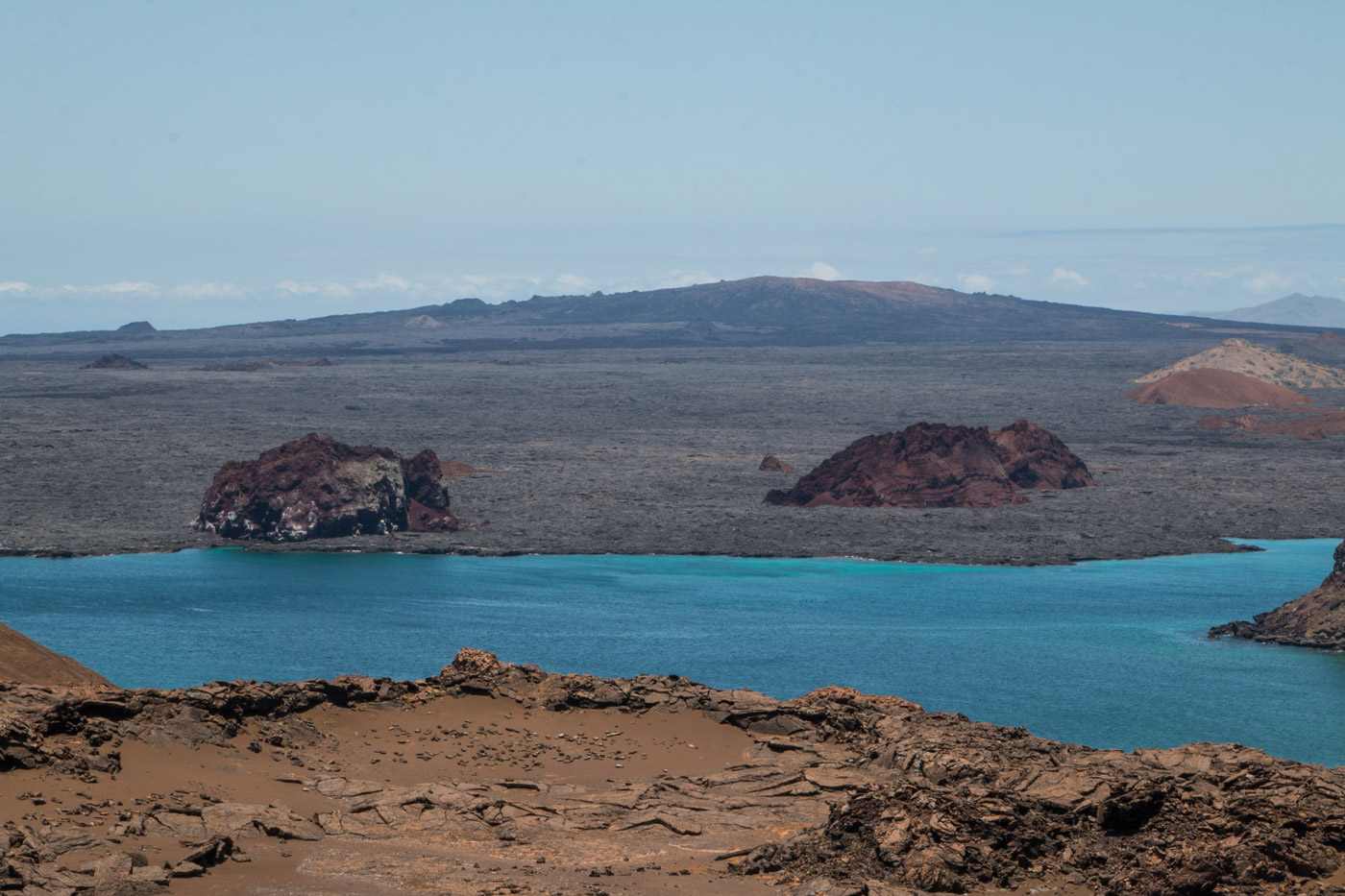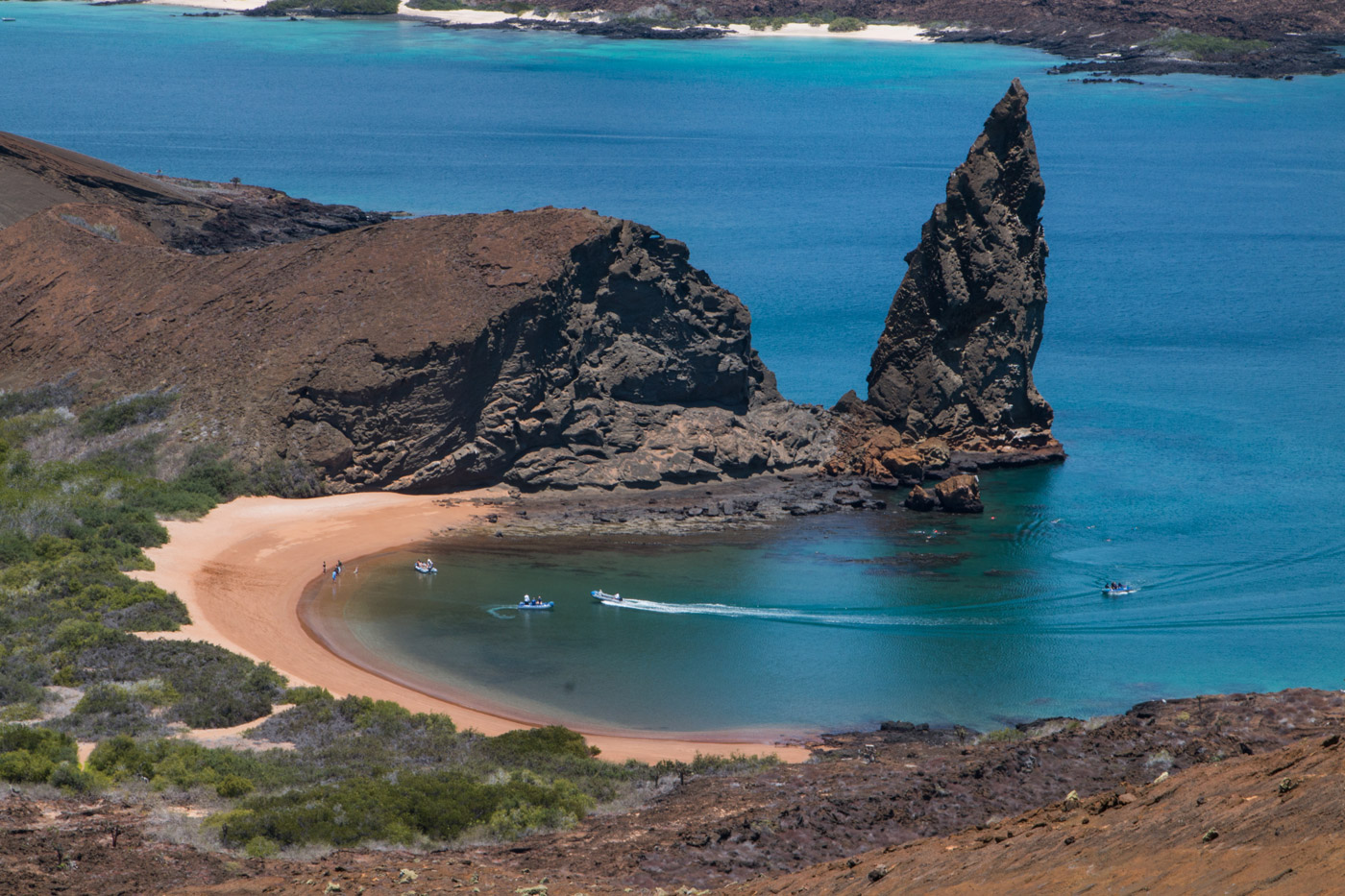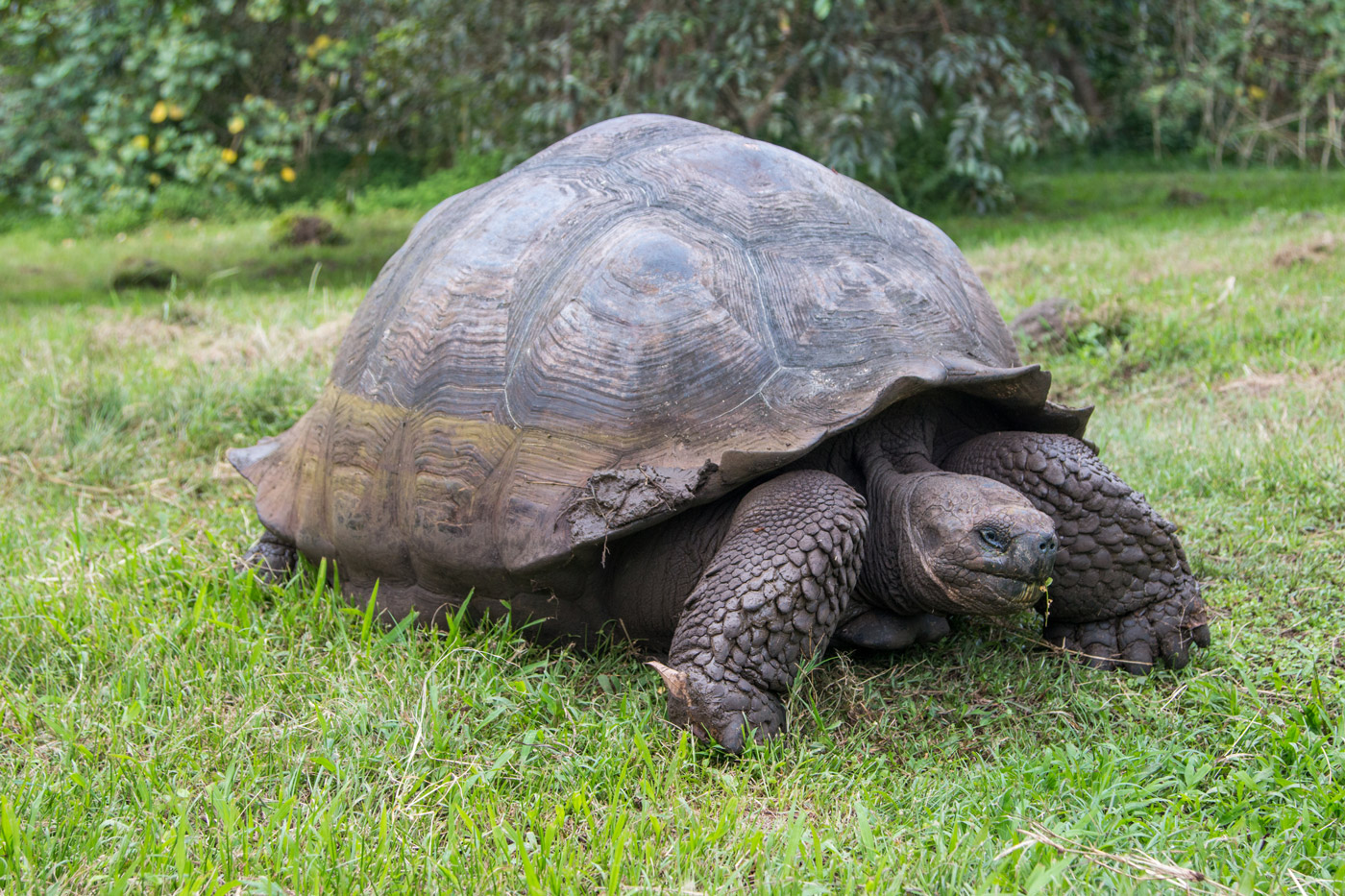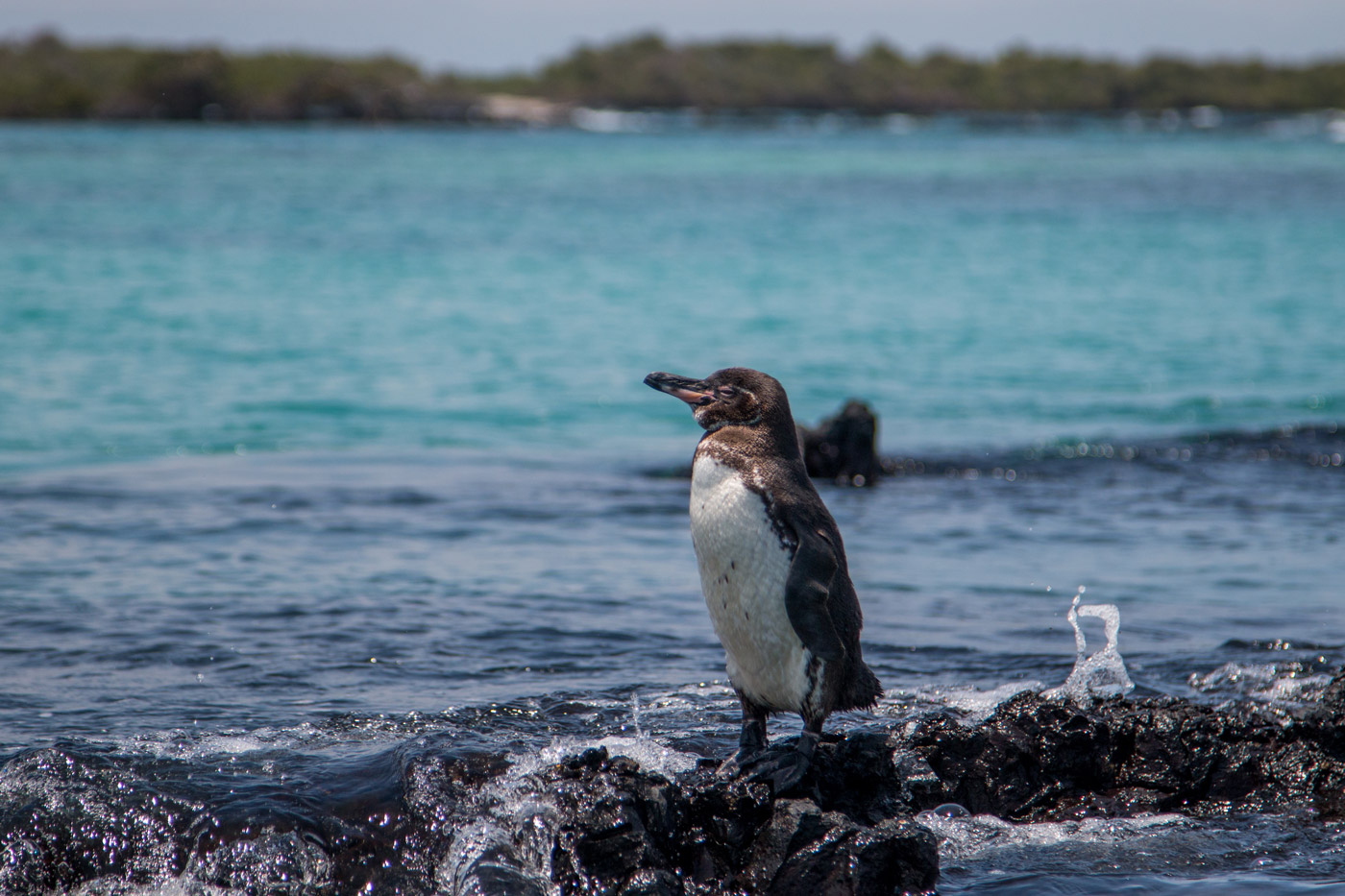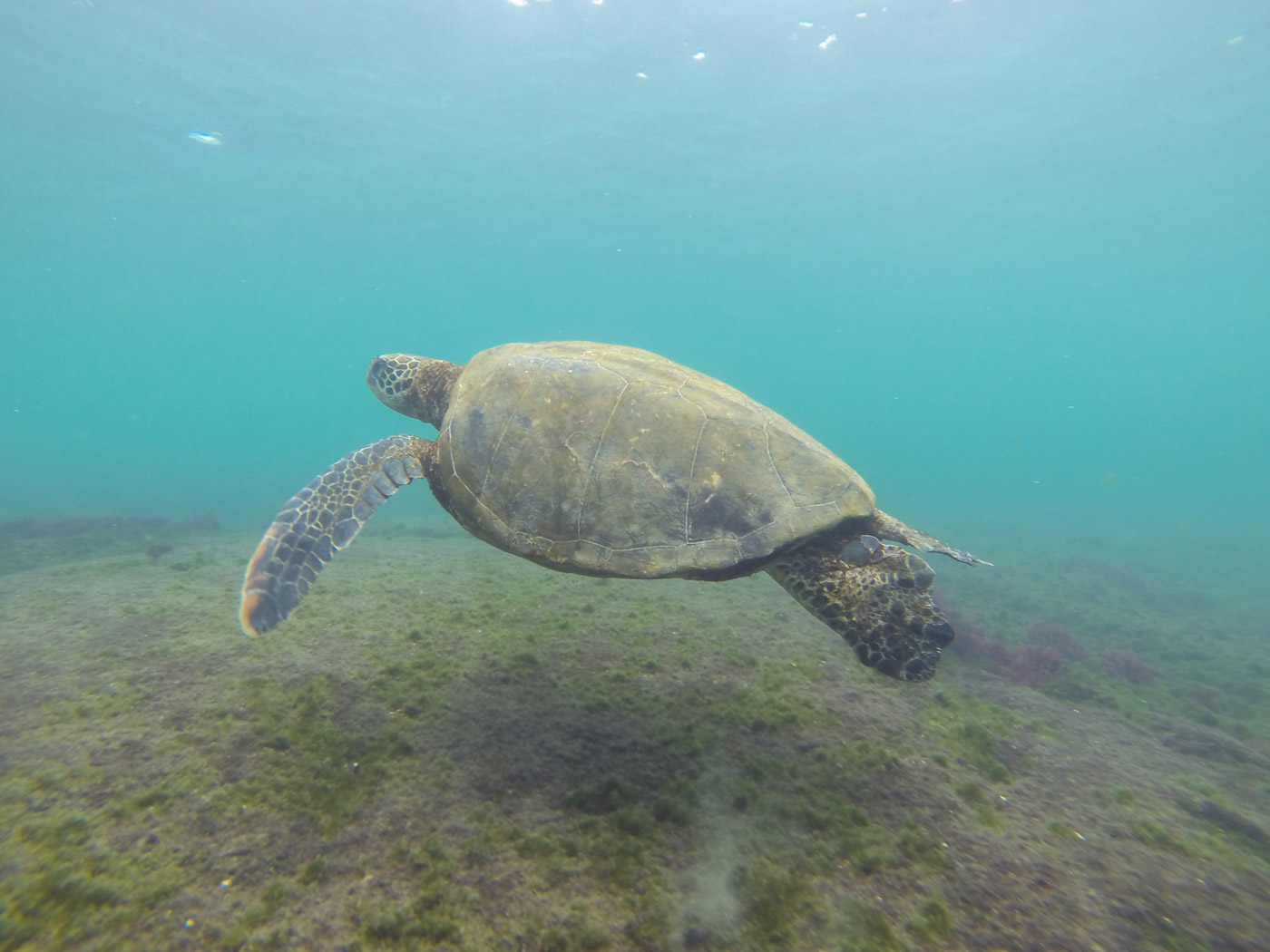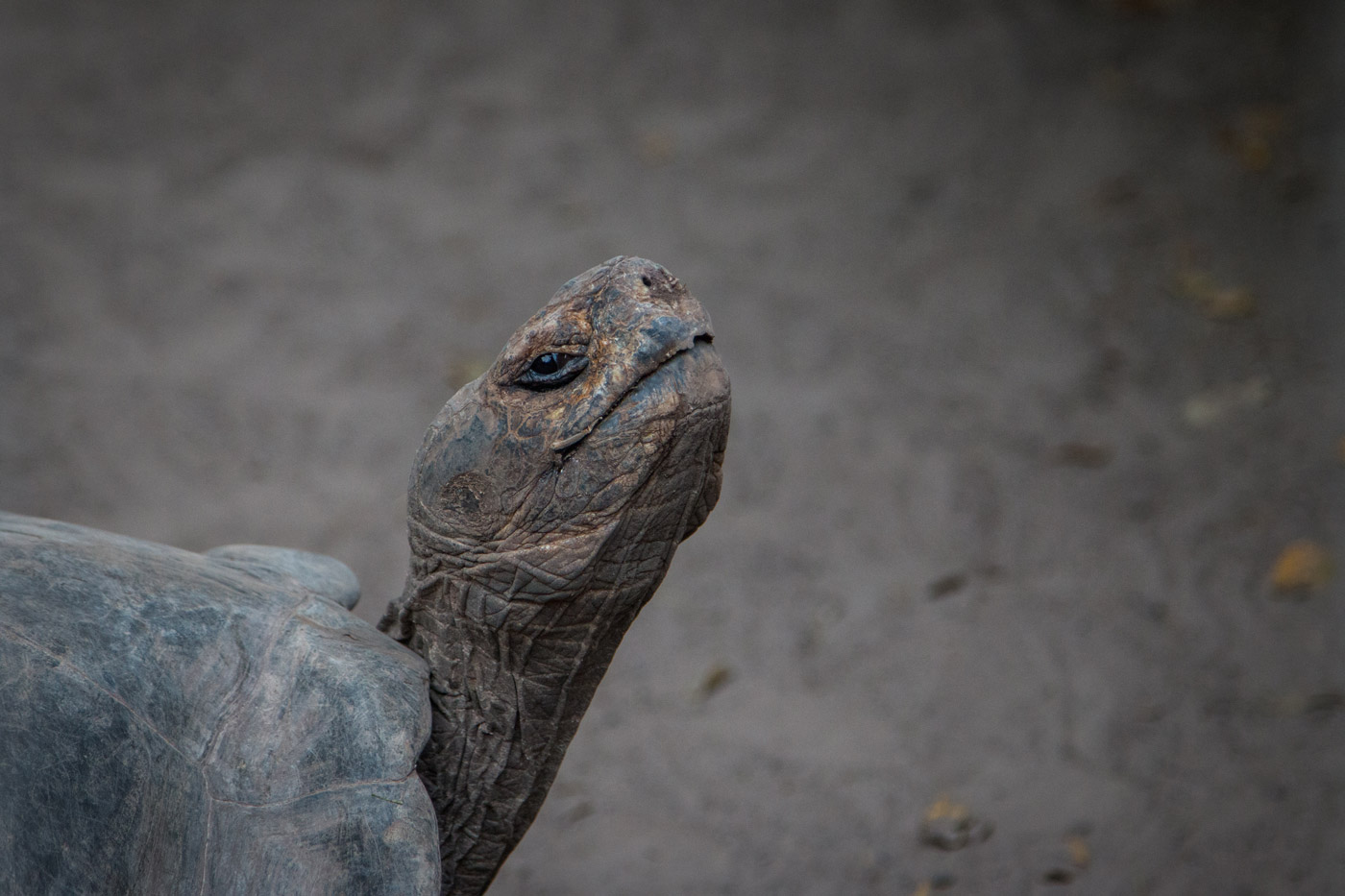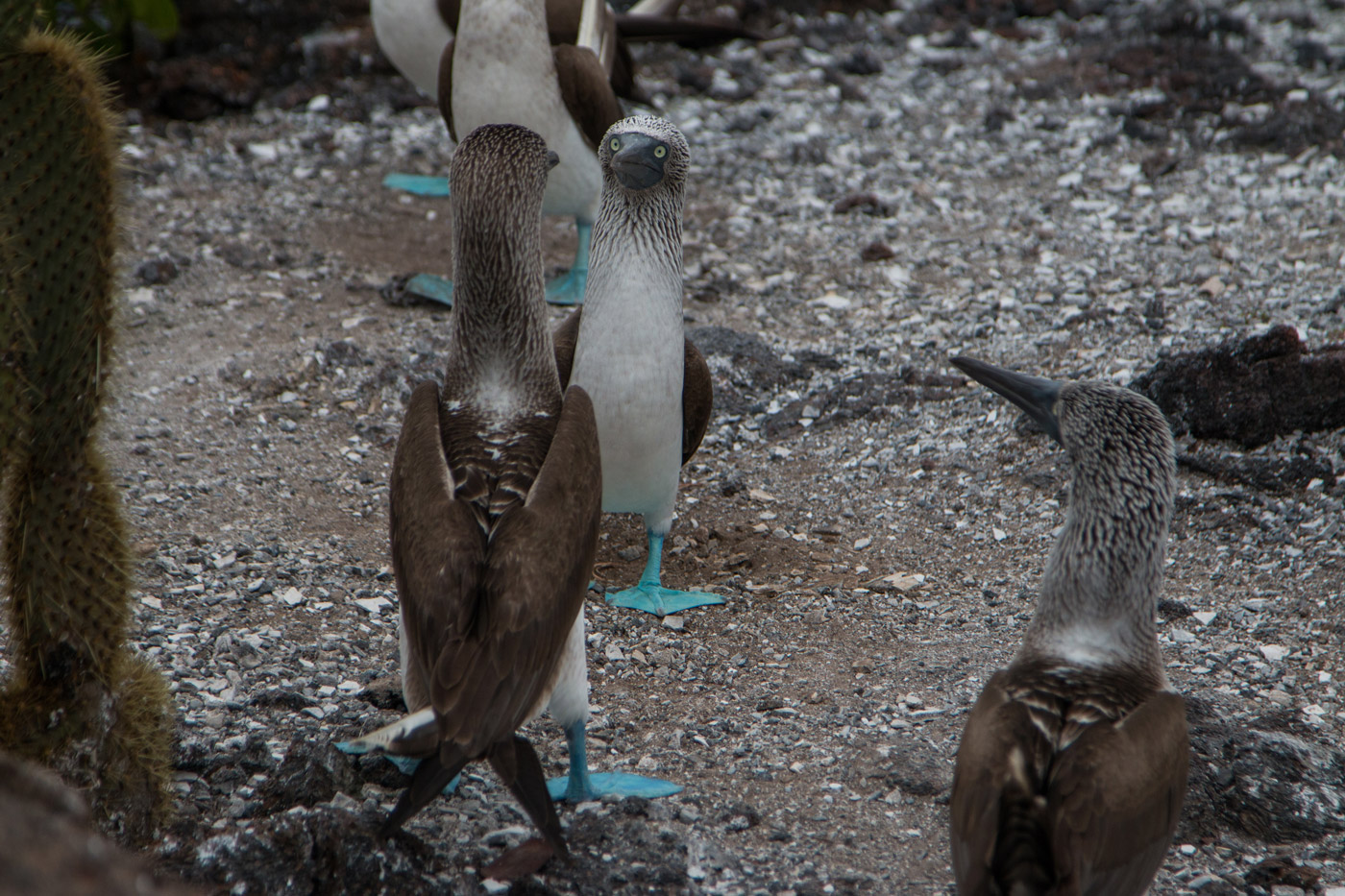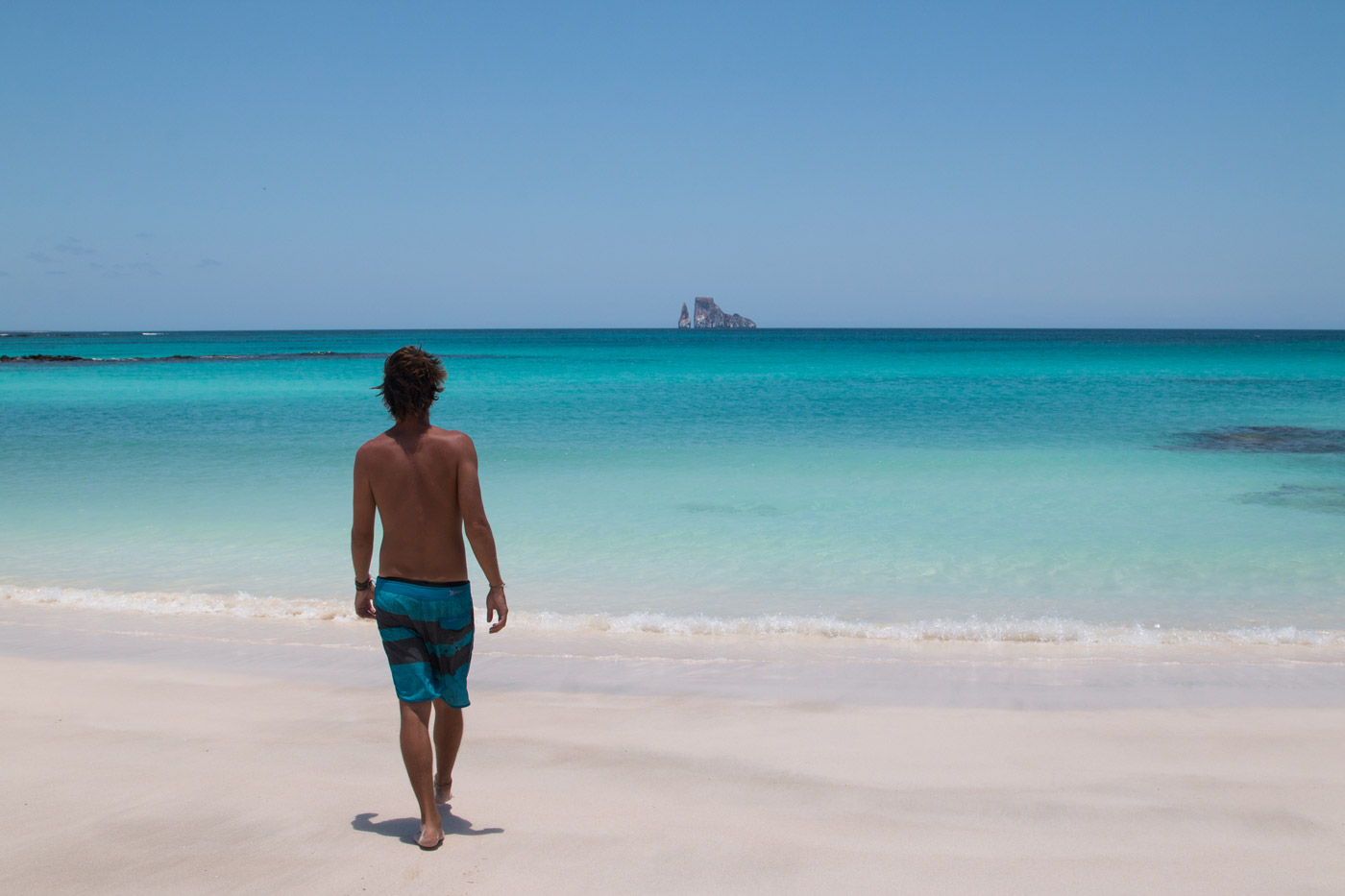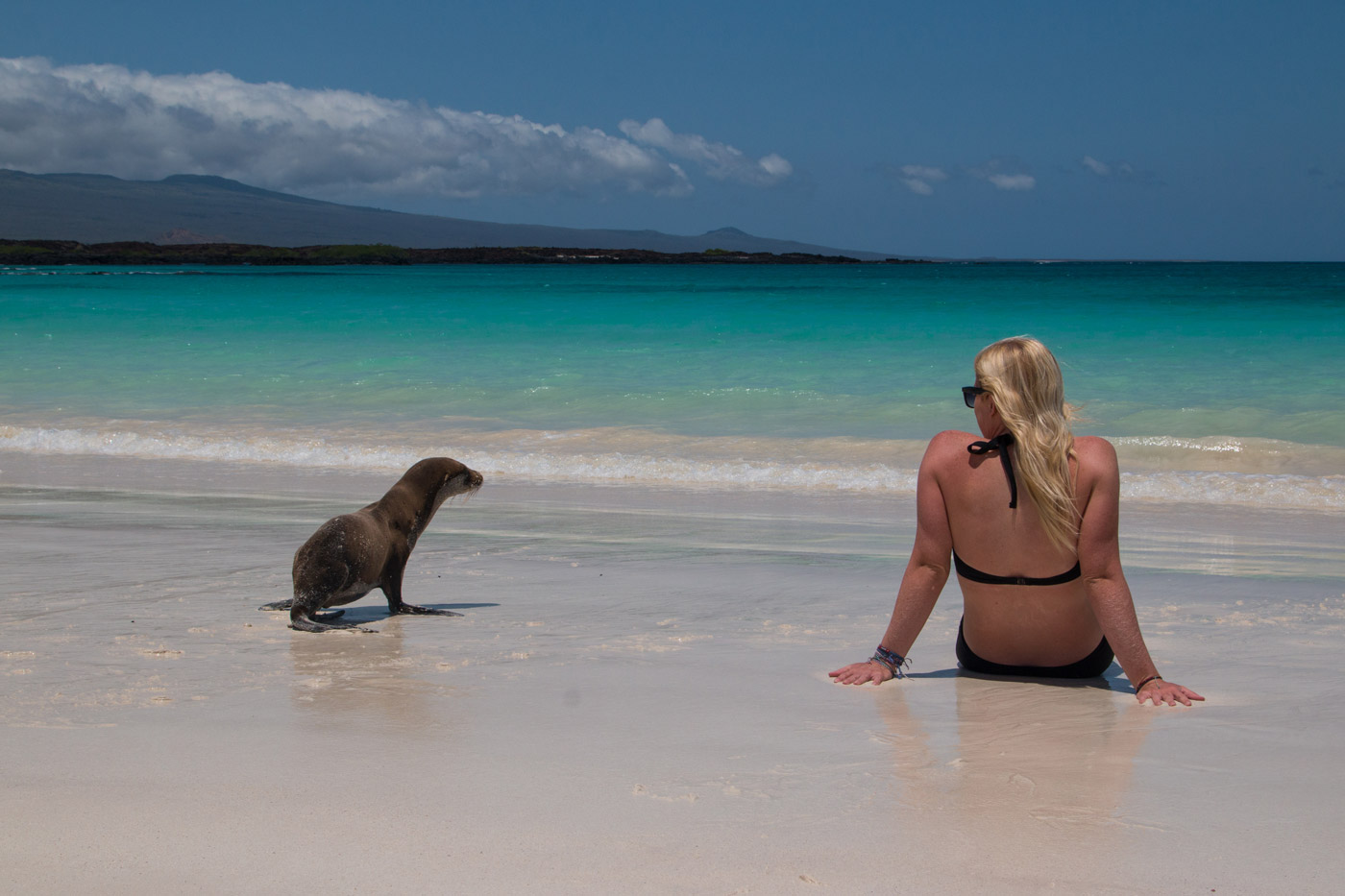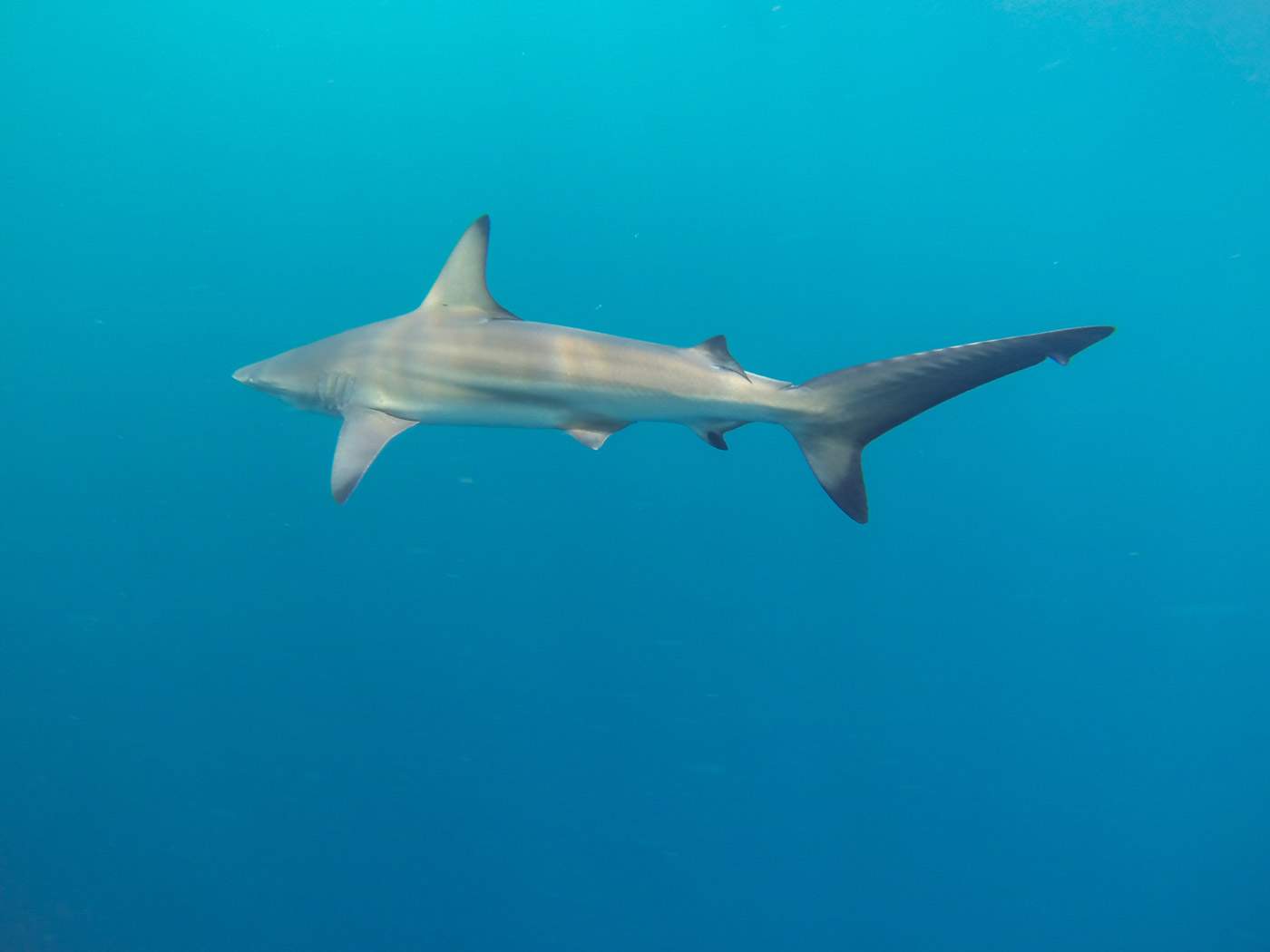The Galápagos Islands had been one of the must do places from the start and the excitement only grew as we met people over the past months that had already been. We flew out of Quito and after a short stop in Guayaquil landed on the island of San Cristobal. Lauren had posted a photo of our boarding passes and entry permit on Facebook at the airport before boarding and by chance some friends we had made on our trip through the San Blas Islands happened to see it. They were just finishing up their stay in the Galápagos and had plenty of helpful info to share. Just as we had intended to do they had crammed as much as they could into their stay. With no accommodation booked we headed to their hostel and managed to get the same cheap rate they were paying. At sealevel we were back to boardshort weather and within an hour of landing we were already hanging out with sea lions on the beach of La Loberia.
Situated 1000km from the coast of Ecuador, the area’s remote and isolated location places them at the junction of three different ocean currents and at the centre of ongoing seismic and volcanic activity. This environment has lead to the development of unusual and unique plant and animal life both in the water and on land and inspired Charles Darwin’s theory of evolution by natural selection. The islands are considered a living museum and showcase of evolution with an impressive 97% of the area declared National Park leaving only the remaining 3% to human settlements.
Animals in the Galápagos do not see humans as a threat, nor do they show any fear from our presence. Having lived for many years peacefully without humans, or even mostly without predators, they live in a paradise of animals and we’re nothing more than a curiosity. On a daily basis we walked paths through hundreds of iguanas laying in the sun and strolled right up to birds and resting sea lions to take a photo with few, if any, even bothering to move.
That first afternoon, on recommendation from the hostel owner, we walked to Tijeretas, a quiet and protected bay with clean, clear water. We jumped in with snorkels and had been swimming for only a couple of minutes when I spotted a turtle and called Lauren over. We followed it until a playful sea lion pup found us and wanted our attention, so much so that it swam circles around the turtle until it went away. We were the only ones in the water and swam with it for over an hour. It was so curious coming right up to our faces before darting away encouraging us to follow. I dove down doing twists and backflips underwater as it copied me getting more and more excited the more I played with it. People were standing on the cliffs watching us, their attention drawn by the sound of Lauren squealing with excitement through her snorkel. It was getting dark and we were shivering so we reluctantly said goodbye to our little friend and got out of the water. Considering our plane had only landed at 1pm that afternoon we were already in love with the place and if the rest of our stay was even half as exciting as that first afternoon we would’ve been happy.
Early the next morning we caught a boat over to the island of Santa Cruz. Given majority of the action in the Galápagos happens on the water, including these 2+ hour island transfers, anybody that suffers from sea sickness could be forgiven for being anxious. It can get quite rough especially once you hit the open ocean but thankfully we were both fine and I found having chewing gum helped a lot.
Not wanting to waste any daylight hours we found some accommodation, dropped our bags and hired some snorkels for the day. Along with day trips there are plenty of free activities that can also be enjoyed around the islands. Our first stop, Las Grietas, was a short water taxi and then walk away. It is a deep swimming hole that runs through the base of volcanic crevices that were formed during the cooling of molten lava and is a mixture of fresh mountain water and salt water. We swam through the thin channel and climbed over the rocks at the opposite end to reach an empty pool on the other side, and after swimming through that, a third pool over the next set of rocks. They were much deeper, and quieter, without the lifejacket wearing tour groups that were flailing around in the first pool. We swam around taking photos and playing in the clear, refreshing water and I dove down following bigger fish and exploring the rocks and caves on the bottom.
After a brief stop for lunch we set off walking to Tortuga Bay for the afternoon, a scenic yet lengthy stroll along a path scattered with the interesting looking prickly pear cactus trees and then further along the beach. We spotted many marine iguanas along the way, both on the sand and coming in to shore through the waves to lay spread out in the sun, occasionally spitting a stream of salt water out in front of them having filtered it for ingestion. They too, like many other plants and animals on the islands are not found anywhere else in the world and have adapted to the environment to flourish with few predators.
When it came to the nights we were both exhausted after the early starts and long, active and eventful days filled with lots of swimming, snorkelling and walking. We were often fighting to not fall asleep at the dinner table before retiring to the room to bed, satisfied that we had got the most we could out of the day and location.
Bartolome Island has an unusual landscape made up of red and orange volcanic rock contrasted with dark blue water. We picked a day tour and after a bus ride across Santa Cruz the group eagerly boarded a fancy boat to take us the two hours over to Bartolome. Upon arrival we followed the path from the shore, climbing the stairs high up the mountain lookout for a panoramic view of the island and its most recognisable sight, Pinnacle Rock, the most representative landmark of the Galápagos. Despite the islands being relatively close together, their landscapes varied greatly and with an extinct volcano and treeless, barren land as far as you could see, Bartolome was like we were on another planet.
Back down at the water it was time for a much needed swim and we dived off the boat with our snorkels to cool down and explore. There were schools of brightly coloured fish everywhere we looked and we even swam with an iguana as it made its way to lay on a rock in the sun. We had a late seafood lunch with the group on the deck before the boat made its way back to Santa Cruz.
The following day we took off on another tour, this time on a day trip to Santa Fé for another busy day of snorkelling. We first stopped in deep water and I dove down to swim through large schools of fish with the camera before we moved around into the bay to play with the baby sea lions in front of their colony. The pups are really curious and the most fun to swim with as they enjoy playing underwater with us, copying our every move and even cheekily coming up close and blowing bubbles for the camera. While in the water we were also lucky to be able to tick off more animal sightings as we swam up close with stingrays, turtles and white tip sharks. After lunch we swam at yet another beautiful beach and walked along the white sand exploring and taking photos of the marine iguanas and sally lightfoot crabs. Much to our excitement we completed an already wildlife filled day with several humpback whales popping up beside the boat as we made our way back.
El Chato is a tortoise reserve in the highlands of Santa Cruz island where hundreds of tortoises roam free. These days the tortoises are a protected species and are safe from humans, once their primary predator. We took a taxi to the reserve and walked around taking photos of the large tortoises as they slowly moved around eating the grass. You could not look in any direction without spotting at least one and we even had our path stubbornly blocked forcing us into the shrub to get past. Our friendly taxi driver chose to come with us instead of wait in the car and happily lead us around armed with google translate on his phone. We followed as he also walked us through the long underground lava tunnels formed by flowing lava leaving cave-like channels in the rock deep below the now tortoise reserve.
Isabella Island was another of our stops, containing six volcanoes and is the largest of all the islands combined. We wasted no time getting off the transfer boat and found both accommodation and a tour that was leaving in just over an hour. After a quick lunch we left on the tour to Las Tintoreras where we joined some others on a small boat and were taken to a nearby island. We spotted some more marine iguanas, white tipped sharks and our first lot of Galápagos penguins, endemic to the area and adapted to be the only penguin to live north of the equator in the wild.
We went snorkelling yet again and swam with around 10 huge sea turtles as they peacefully moved around us not bothered by our presence as we took photos. On landing back at Isabella, we held on to the snorkelling gear and went back in just off the side of the wharf. Lauren found a sea lion pup that wanted to play hide and seek around the mangroves and wharf. I watched on as they chased each other, the sea lion sneakily hid behind objects before racing right up to her face and darting away at the last second. I jumped in and we were joined by a penguin that wanted to swim with us too, coming right up close to the camera.
The islands feature not only many varieties of marine life but also birds. We got a lift with a local guy asking him to take us inland to a lake where the flamingos feed and we stayed at the edge waiting for the perfect moment to get a photo with their heads out of the water.
Isabella Island is home to five different types of turtles along with a tortoise breeding centre, established to protect this unique species and bring them back from the brink of extinction. Without the threat of humans or introduced animals these tortoises can grow to reach 150 years old, meaning someone who sees a tortoise get born will not live to see it grow to full size. We walked around the breeding centre watching the hundreds of tortoises of varying ages and sizes laying in the sun.
Los Tuneles is another popular day trip from Isabella which had us waking up early and taking a boat out to our first stop to see the canals in the lava rocks with tunnels, bridges and caves formed by lava flow many many years ago. We disembarked, climbing up the edge of the sharp volcanic rock to see a harsh, barren landscape of jagged rocks and dry cacti. We had stopped to see the blue-footed booby, an interesting looking bird with electric blue feet. There were many nesting in the area and we watched on as the males attempted to attract a female mate by stamping and dancing to show off their blue feet.
We got into the water with snorkels and explored the underwater tunnels, home to many brightly coloured fish, sea horses, sharks and turtles. Some of the turtles are so large that when Lauren swam above one to compare it was the size of her.
Our final stop in the Galápagos was back on San Cristobal where we would spend our last remaining days before flying back to mainland Ecuador. There was plenty more snorkelling to be done and we went back to our two favourite spots from the first day and were not surprised when we found yet again many more turtles and sea lions to swim with. After snorkelling daily the initial thrill of discovering these animals may have slightly dropped but they were still just as entertaining as we swam together for hours and took hundreds of photos from all different angles.
Lauren was lucky to have her birthday fall on our last full day and we had saved one of the best day trips to celebrate. We landed on the empty Cerro Brujo beach and were blown away by its amazing blue water and white sand, it was like being inside a computer wallpaper.
We quickly found a spot on the sand to drop our bags and went straight into the water to swim. We have learned during our travels that coming from Australia we have surprisingly high standards in comparison to others when it comes to being impressed by beaches but this was one of, if not the nicest beaches I had ever seen. It was free from footsteps and we were lucky enough to be sharing it with only a small group from our boat and some sea lions who had wandered out of the water to greet us.
Despite its beauty, the main drawcard for the tour is not the beach but a snorkelling trip out to Kicker Rock, an impressive looking rock formation sitting in the middle of the ocean and standing 150m out of the water. We were dropped in deep water and snorkelled through the 22m deep channel between the rock. Compared to previous days of snorkelling this was in the open ocean which was rougher and not for the weak swimmer. We were there in the hope of seeing bigger things and the depth and remoteness of the spot very much felt like we were guests in their territory. I dove down deep, perhaps too deep, equalising my ears multiple times as I went down and was rewarded with the sight of huge sea turtles floating along in silence well below the turbulent surface. I swam down through schools of thousands of fish, so dense and unbothered by my presence that my surroundings went completely dark as I swam through the middle. Coming out the other side, I was not the only one interested in the fish as I spotted numerous Galápagos sharks lurking in the darkness. I dove down and followed a shark with the GoPro as it swam right through the middle of the school, getting a little too close for comfort but determined to get both a good photo and interesting video footage. We both agreed that this trip has set high expectations on any future snorkelling and it will take something pretty special in the water to impress us from now on.
We were happy with our approach to tackle the Galápagos on our own, opting to island hop and tailor our 8 day visit around the many places and animals we wanted to see. The Galápagos Islands are not typically on a backpackers itinerary due to cost constraints and whilst it could have been far cheaper for us had we not packed so much into our stay and taken so many day tours it could also have been much more expensive if we had taken the cruise route. We saw it as a once in a lifetime opportunity and it was never something we had considered skipping knowing we were already in that part of the world. It is truly an amazing and unbelievable place and after taking in excess of 2000 photos during that time it really is a photographers heaven. Everyday felt like a National Geographic documentary and it has been a definite highlight in my already crowded list over the past 8 months of travel.
